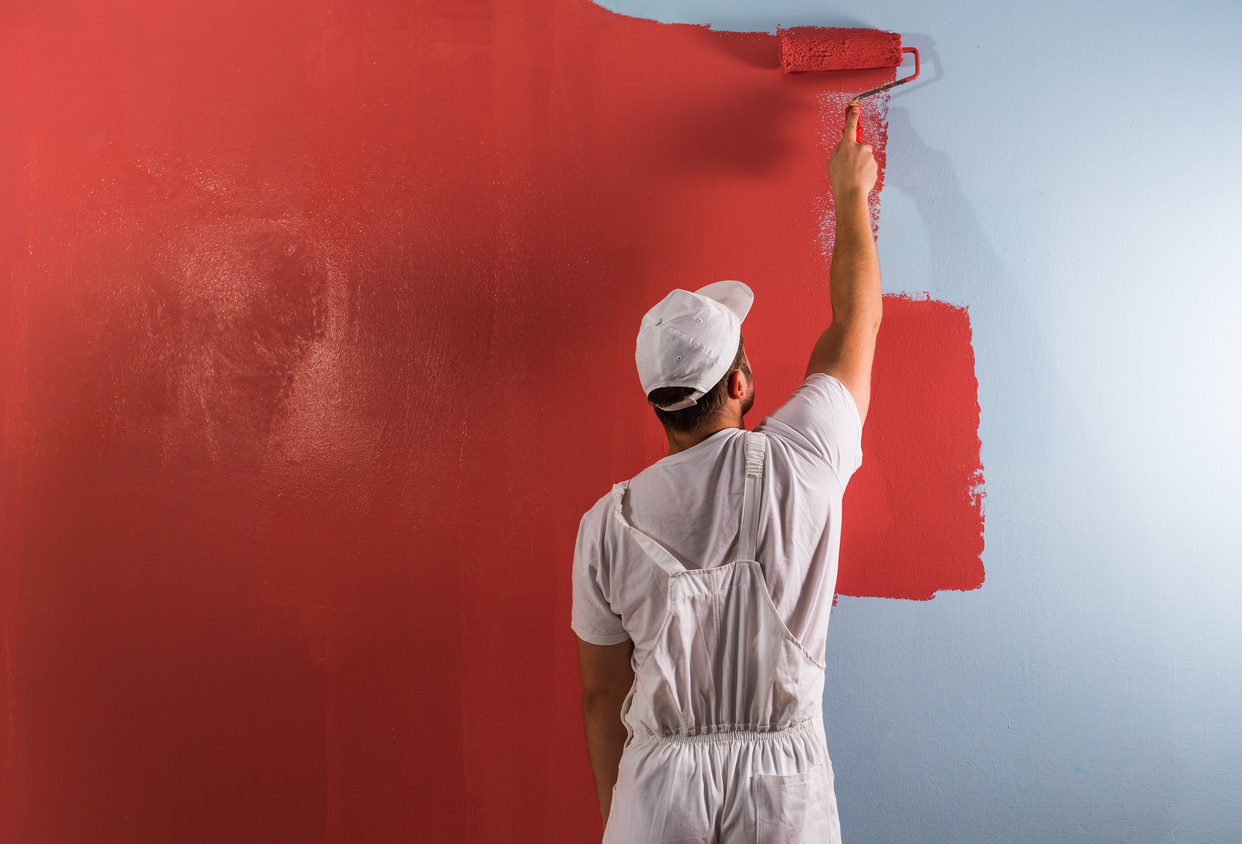For Livermore homeowners, a child’s room plays an important role in their development and well-being. It is a haven for your little ones to rest, play, and learn. Refreshing this space can energize and renew their environment. It also engenders creativity and comfort. You can also consider professional faux painting to add texture and depth to any room.
However, finding trustworthy and affordable interior painters can be a challenging task. If you tried looking for someone to paint your child’s room before, the process was most likely daunting. This article can guide you through the selection process.
Identifying your needs and preferences
Before painting a child’s room, consider the following factors:
- Non-toxic paint: To ensure a safe environment for your child, choose paints with low or zero VOCs (volatile organic compounds).
- Color selection: Decide between vibrant colors that stimulate energy and creativity or calming colors that promote relaxation and sleep.
- Durability and washability: Choose durable and washable paints to withstand wear and tear.
Should you involve your child in the decision-making process? Certainly. It’s their room, so they should have a say on the color choice. The room should reflect your child’s personality and interests. This involvement can make the child feel more comfortable and connected to their space.
Finding the right painter
Tips for finding qualified and affordable painters
- Local listings – Check local business directories, community bulletin boards, and local newspapers for painters offering their services.
- Online platforms – Use websites like Yelp, Angi (formerly Angie’s List), Thumbtack, and HomeAdvisor to find painters with good reviews and ratings.
- Word of mouth – Ask friends, family, neighbors, and coworkers for recommendations. Personal referrals usually lead to trustworthy, reputable, and affordable options.
What to look for in a painter
- Credentials – Ensure the painter has the necessary certifications and training.
- Experience with residential projects – Look for painters with experience with residential projects, especially children’s rooms.
- Reviews and testimonials – Check online reviews and ask for testimonials from previous clients. Online reviews can help you gauge satisfaction and reliability.
Importance of proper licensing and insurance
- Licensing – A licensed painter adheres to industry standards and regulations. It ensures quality and compliance with local laws.
- Insurance – Adequate insurance protects you from liability in case of accidents or damage during the project. It ensures that both the painter and your property are covered.
Vetting potential painters
Key questions to ask potential painters
1. Process:
- How do you prepare the room before painting?
- What steps do you take to ensure a smooth and even finish?
2. Materials:
- What paint type do you use, and why?
- Are your paints low-VOC or non-toxic, suitable for children’s rooms?
3. Time Frame:
- How long will the project take from start to finish?
- What is your work schedule, and how will it minimize disruption?
4. Cost:
- Can you provide a detailed written estimate, including labor, materials, and additional costs?
- Are there any potential extra charges that I should be aware of?
Assessing quotes and comparing them against market rates
1. Breakdown comparison
- Ensure each quote includes a detailed labor, materials, and other costs breakdown.
- Compare the cost of materials and the type of paint used.
2. Quality and scope
- Look at what each quote covers (e.g., number of coats, preparation work, and cleanup).
- Consider the warranties or guarantees provided.
3. Market rates
- Research average costs for similar projects in your area through online resources or local home improvement stores.
- Balance cost against the painter’s reputation, experience, and the quality of materials proposed.
Checking references and previous work
1. References
- Ask for and follow up with at least three references, preferably from families with children.
- Ask about their overall satisfaction, the painter’s professionalism, and adherence to timelines and budgets.
2. Previous work
- Request a portfolio of previous projects focusing on children’s rooms, if possible.
- If feasible, visit a completed project to inspect the quality and durability of the work.
3. Child safety
- Confirm that the painter has experience working in homes with children and takes necessary safety precautions.
- Check for feedback on how well the painter managed to keep the workspace safe and clean.
Preparing for the paint job
Steps to prepare the children’s room for painting
Setting realistic expectations about each phase helps ensure a smooth process and minimizes disruption. Consider the following steps:
1. Move furniture
- Relocate all furniture pieces to the center of the room (if they can’t be moved out).
- Cover large items with plastic sheets or drop cloths to protect them from paint splatters.
2. Cover non-paintable surfaces:
- Use painter’s tape to cover the edges of windows, doors, and trim.
- Cover floors with drop cloths or plastic sheeting.
- Remove or cover light fixtures and outlet covers.
Safety measures for children sensitive to paint fumes
1. Choose low-VOC or no-VOC paint:
- Choose paint with low or no VOCs to minimize harmful fumes.
2. Ventilation
- Ensure good ventilation by opening windows and using fans to circulate air.
- Consider using an air purifier to help remove any lingering fumes.
3. Relocate children
- Keep children out of the room being painted and out of the house until the paint is dry and the room is ventilated.
4. Protective gear
- Use masks and gloves when painting to reduce exposure to fumes and chemicals.
Setting a timeline and expectations
- Preparation phase (1-2 days) – Moving furniture, covering surfaces, and taping edges.
- Painting Phase (1-2 days) – Applying primer (if needed) and multiple coats of paint. Then, allow time for each coat to dry.
- Drying and ventilation (2-3 days) – Ensuring the room is well-ventilated and giving the paint ample time to dry and off-gas.
- Reassembly phase (1 day) – Moving furniture back into place, removing coverings, and touching up any missed spots.
During the painting process
Monitoring the paint job
- Initial inspection – Review the surface preparation, including cleaning and priming.
- Regular check-ins – Periodically visit the site to observe progress and workmanship.
- Quality standards – Compare the work against industry standards and the contract specifications.
- Addressing issues promptly – Identify and address defects immediately.
- Final inspection – Conduct a thorough inspection upon completion. It ensures everything meets expectations.
Communication tips with the painter
- Clear expectations – Clearly outline your expectations and project scope from the beginning.
- Open dialogue – Maintain an open line of communication for questions and updates.
- Scheduled meetings – Set regular check-in times to discuss progress and any concerns.
- Document changes – Keep a record of agreed-upon changes or modifications to the project.
- Positive feedback – Provide positive reinforcement along with constructive criticism. It maintains and ensures a good working relationship.
Post-painting considerations
Inspection and follow-up with the painter
After the painting job is completed, conduct a thorough inspection. This will help you identify any areas that need touch-ups. Communicate any concerns or imperfections with the painter to ensure they address them promptly to achieve a polished and satisfactory finish.
Ventilating the room
Properly ventilate the room. Open windows and use fans to circulate fresh air to help clear out any residual paint fumes. Doing this will make the space safe and comfortable for your child to use. Adequate ventilation is crucial for health and safety.
Adding final touches
Once the room is painted and ventilated, personalize it with the final touches. Suggestions include decals, wall art, or other decorative elements. These add character and make the room more inviting and unique for your child. They also reflect their personality and interests.
Conclusion
Refreshing your Pleasanton area child’s room creates a more stimulating and comfortable environment. A newly painted room with exciting colors helps boost their mood and productivity. Choosing the right painter ensures quality results, safety, and durability. Trusting professional and affordable painters brings expertise and cost-effectiveness. However, you must conduct due diligence to ensure reliability and satisfaction.
Are you ready to turn your child’s room into a fun, comfortable, and nurturing space? Schedule a free estimate appointment with Custom Painting, Inc. Call us at 925-294-8062 or complete our contact form.





